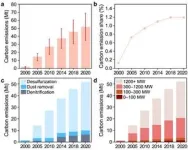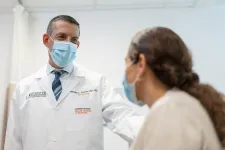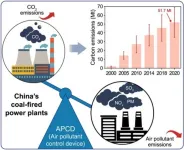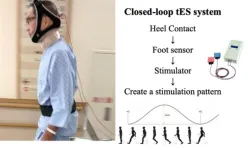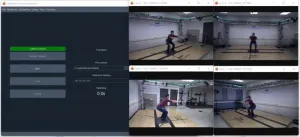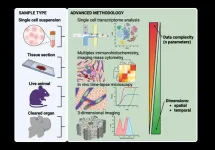(Press-News.org) OAK BROOK, Ill. – A machine learning model found that background parenchymal enhancement (BPE) on breast MRI is an indicator of breast cancer risk in women with extremely dense breasts, according to a study published in Radiology, a journal of the Radiological Society of North America (RSNA).
Women with extremely dense breasts are at a three- to six-times higher risk of developing breast cancer compared to women who have fatty breasts. Since mammography is less sensitive in detecting early-stage breast cancer in women with dense breasts, women between the ages of 50 and 75 years with dense breasts may benefit from additional MRI screening.
Another breast cancer risk factor is BPE, which is the level of normal fibroglandular tissue that enhances on breast MRI. However, not much is known about how BPE compares to other more established clinical risk factors of breast cancer, such as age, body mass index (BMI) family history, and breast density.
“Thus far, studies on breast cancer risk factors have typically focused on women at high lifetime risk of developing breast cancer,” said study co-author Kenneth G. A. Gilhuijs, Ph.D., from the Department of Radiology at the University Medical Center Utrecht in the Netherlands. “This is the first study that we know of that demonstrates an association between background parenchymal enhancement and occurrence of breast cancer in women with extremely dense breasts.”
To determine how much BPE is an indicator of breast cancer risk, the researchers used dynamic contrast-enhanced MRI exams from 4,553 participants in the Dense Tissue and Early Breast Neoplasm Screening (DENSE) Trial, a large multi-institutional study based in the Netherlands, to develop a deep learning model to automatically identify the fibroglandular tissue. The MRI exams were performed every two years in eight hospitals in the Netherlands between December 2011 and January 2016.
After adjusting for age, BMI and BPE, the researchers found that breast cancer occurrence was greater in women with higher volumes of enhancing parenchyma compared to women with low volumes of enhancing parenchyma.
Of the 4,553 women included in the study, 122 were diagnosed with breast cancer. Roughly 63% of them were diagnosed after the first round of screening. An average cancer detection time of 24 months was associated with the remaining women diagnosed with breast cancer.
“Parenchyma does not enhance uniformly on MRI,” Dr. Gilhuijs said. “This method calculates all the different subvolumes at which the parenchyma enhances and sorts them from high to low.”
The researchers point out that while the implementation of supplemental MRI screening in women with dense breasts will result in fewer interval cancers—which are breast cancers that are diagnosed in between routine mammography screenings—it will also further strain radiologist workloads. Developing more personalized strategies to deal with the added number of screenings may help alleviate the strain on the healthcare field.
“Our study is a first step in a direction to further tailor the frequency of supplemental MRI screening to individual women with dense breasts, focusing not only on breast density as a main risk factor but also on other properties of the breast established from a first screening MRI,” Dr. Gilhuijs said.
###
“Assessing Quantitative Parenchymal Features at Baseline Dynamic Contrast-enhanced MRI and Cancer Occurrence in Women with Extremely Dense Breasts.” Collaborating with Dr. Gilhuijs were Hui Wang, M.D., Bas H. M. van der Velden, Ph.D., Erik Verburg, Ph.D., Marije F. Bakker, Ph.D., Ruud M. Pijnappel, M.D., Ph.D., Wouter B. Veldhuis, M.D., Ph.D., and Carla H. van Gils, Ph.D.
In 2023, Radiology is celebrating its 100th anniversary with 12 centennial issues, highlighting Radiology’s legacy of publishing exceptional and practical science to improve patient care.
Radiology is edited by Linda Moy, M.D., New York University, New York, N.Y., and owned and published by the Radiological Society of North America, Inc. (https://pubs.rsna.org/journal/radiology)
RSNA is an association of radiologists, radiation oncologists, medical physicists and related scientists promoting excellence in patient care and health care delivery through education, research and technologic innovation. The Society is based in Oak Brook, Illinois. (RSNA.org)
For patient-friendly information on breast imaging, visit RadiologyInfo.org.
END
MIAMI, FLORIDA (EMBARGOED UNTIL AUG. 8, 2023 AT 10 A.M. ET) – Blood disorders known as myelodysplastic syndromes/neoplasms (MDS) are difficult to diagnose – and are commonly misdiagnosed – putting patients at increased risk for treatment mistakes and other potentially harmful consequences, according to researchers with Sylvester Comprehensive Cancer Center at the University of Miami Miller School of Medicine and collaborating organizations.
Their findings, published Aug. 8 in Blood Advances, a peer-reviewed journal of the American Society of Hematology, highlight the vital need for strong coordination between clinicians and skilled pathologists to ensure ...
To combat this issue, China has implemented various environmental regulations, including the widespread use of air pollution control devices (APCDs) in CFPPs. While APCDs have successfully reduced air pollutants, their electricity consumption has led to indirect carbon dioxide (CO2) emissions. The extent of these CO2 emissions has remained uncertain, prompting researchers to delve deeper into this overlooked environmental concern.
In a new study published in Volume 17 of the journal Environmental Science and Ecotechnology, researchers from Shandong University conducted a study revealing that the proportion of APCD CO2 emissions in total ...
Gait-related disturbances adversely affect the quality of life of patients with Parkinson’s disease (PD), a condition affecting millions worldwide. Although various pharmacological, surgical, and rehabilitative treatments exist, their effectiveness is limited. Now, a team of researchers from Japan has successfully addressed this limitation. Using a novel neuromodulation approach that incorporates gait-combined closed-loop transcranial electrical stimulation, the team demonstrated significant gait improvements in patients with various neurological disorders including PD.
Parkinson’s disease ...
Pollinosis, or hay fever, makes people miserable around the world, and Japanese cedar (Cryptomeria japonica) pollen is a significant cause of the suffering in the 38.8% of Japanese people who are allergic. Japanese cedar is also the country's most important timber species. A single mature tree produces on the order of three hundred million grains of pollen. Saneyoshi Ueno and colleagues investigated the genes required to produce this massive amount of genetic material. Previous research by Ueno’s team identified ...
SAN ANTONIO — August 8, 2023 – Southwest Research Institute is launching its new Engine for Automatic Biomechanical Evaluation (ENABLE™) markerless biomechanics system during the American Society of Biomechanics (ABS) Annual Conference, August 8-11, in Knoxville, Tennessee. ABS attendees can see a demonstration by visiting Booth No. 11.
ENABLE is a user-friendly markerless motion capture system that leverages artificial intelligence, computer vision algorithms and biomechanical modeling. The key advantage of ENABLE is it efficiently captures ...
This review manuscript highlights the relevance of spatially-resolved macrophage phenotyping in liver disease-related research.
The liver is a vital organ heavily populated with macrophages, which represent key players of the innate immune response but also hold key functions in the maintenance of a healthy organ. Liver macrophages are mostly distributed across two populations of different origins and functions during homeostasis and disease: liver resident macrophages (referred to as Kupffer cells, KCs), and monocytic macrophages derived from the bone-marrow (MoMFs). The KC: MoMF ratio, as well as their respective spatial distribution through the liver, are increasingly ...
A study looks at the mechanisms behind genetic variation in the bacteria that cause Lyme disease. Lyme disease is the most common vector-transmitted disease in the United States, with around 476,000 human cases annually. Most Lyme disease is caused by the bacteria Borrelia burgdorferi (Bb), which is transmitted by ticks and can infect a wide range of mammals and birds. Matthew Combs and colleagues analyzed the genetic diversity of Bb, specifically focusing on the pathogen’s outer surface protein C (ospC) gene, a well-known virulence factor that is essential for survival of the pathogen inside the tick and the early stages of infection in vertebrates. ...
***Embargo 14:00 UK / 10:00 BRT / 9:00 ET / 6:00 PT Tuesday, August 8, 2023***
SEATTLE, Wash. August 8, 2023 – 569,000 deaths were linked to bacterial antimicrobial resistance (AMR) in all 35 countries of the WHO Region of the Americas, according to a new peer-reviewed paper published in The Lancet Regional Health – Americas. This analysis on the burden of AMR in the Americas is the most comprehensive yet for the region, providing data for 35 countries, 23 bacterial pathogens, and 88 pathogen-drug combinations.
The ...
Humans are social creatures and learn from each other, even from a young age. Infants keenly observe their parents, siblings or caregivers. They watch, imitate and replay what they see to learn skills and behaviors.
The way babies learn and explore their surroundings inspired researchers at Carnegie Mellon University and Meta to develop a new way to teach robots how to simultaneously learn multiple skills and leverage them to tackle unseen, everyday tasks. The researchers set out to develop a robotic AI agent with manipulation abilities equivalent to a 3-year-old child.
The team has announced RoboAgent, an artificial intelligence agent that leverages passive observations and active ...
Every year in the United States, about 1.7 million youth run away from home, which places them at risk for sex trafficking and prostitution. Sadly, most youth tend to fall victim to sex trafficking between the ages of 12 to 14.
While federal and state laws have been enacted to protect these runaway youth, they continue to be arrested, charged and detained for prostitution. Detaining youth who should not legally be considered offenders and who have extensive histories of victimization and mental health issues only exacerbates their underlying vulnerabilities that may have led them to run away or be sexually exploited in the first place.
There is ...

